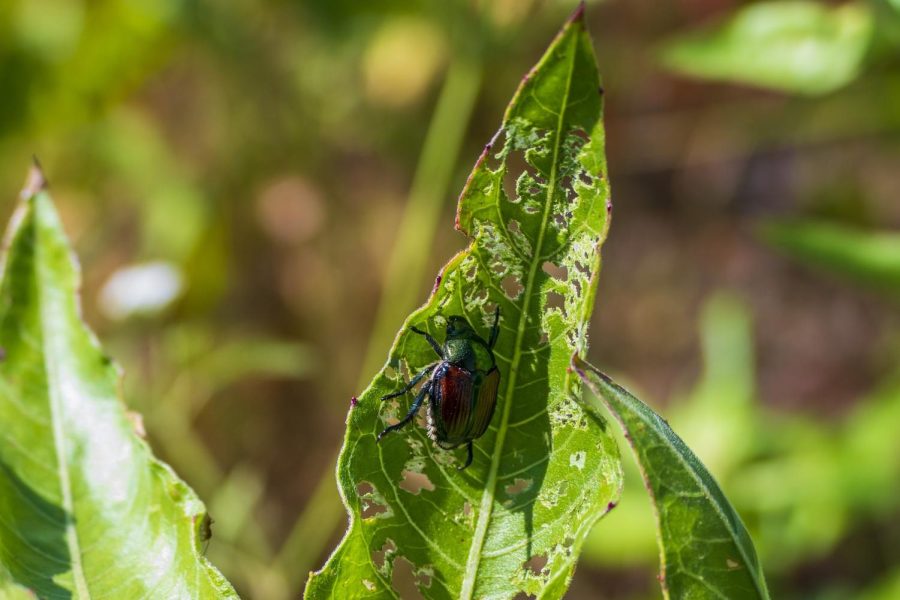Invasive insects ravage the globe
March 2, 2023
As Earth spins, invasive species and pests expand and emerge, affecting whole ecosystems and natural habitats to the point of coining the term ‘invasive bugs’ when these organisms start to damage ecosystems.
“Any invasive species is a species brought over typically by humans, not always, that disrupts the natural ecosystem. So what usually outcompetes or competes for resources of the natural organisms that are in that ecosystem already [is an invasive species],” biology teacher Kelly Pipkins said.
As humans spread around the world via ships and planes, organisms spread into other ecosystems. Most notably, according to The International Union for Conservation of Nature, a study found that “during the last 200 years,” invasive species, including bugs, have “continuously increased worldwide, with more than a third of all first introductions recorded between 1970 and 2014.”
“[Invasive bugs] are a problem because, normally, they end up eating up the food resources that other animals in the ecosystem need, and also they can be predators to other animals that normally wouldn’t really have any. And it just causes a lot more competition in the ecosystem,” sophomore Adriana Aponte said.
Due to an invasive bug’s lack of contest and a bug’s ability to reproduce and age speedily, native creatures commonly have not had time to evolve their defenses, leading to consequences regarding the numbers of native species’ food sources or the native species itself.
For example, the Spotted Lanternfly, which is native to Asia, arrived in the U.S. in 2014 and was first spotted in Forsyth County near the VA-NC border in late 2021. Since their first introduction, Spotted Lanternflies have consumed a wide variety of fruit trees and landscape plants, like roses, apple trees, and grape vines, which, according to North Carolina State University (NCSU), can lead up to a “90% reduction in [grape] crops,” and can “cause damage to more than 70 species” of plants.
“It is scary more invasive species are coming to these habitats and are destroying them even more and worsening them,” sophomore Venus Evergreen said.
In addition, the Emerald Ash Borer, a green beetle native to Asia, first appeared in Michigan in 2002, migrating to the counties of Granville, Vance, and Warren, NC, in 2013. These metallic-looking beetles are known to infest and reproduce on NC trees that animals frequently use for food and people use to produce wooden furniture. Often, the trees exposed to Emerald Ash Borers are killed within three to five years after the green beetles lay their eggs within the trees’ bark and disrupt the trees’ flow of water and nutrients.
Due to the Emerald Ash Borer’s attachment to wood, according to NCSU, “It is believed to have been introduced into the U.S. from wood packing materials” that are shipped in cargo containers. Additionally, since their initial introduction, these beetles have killed over 100 million trees in the U.S., and although they are no official threat to human health, Emerald Ash Borers are associated with 15,000 cardiovascular disease-related deaths between 1990 and 2007.
Overall, according to the National Invasive Species Information Center, invasive species, including bugs, can “negatively impact human health by infecting humans with new diseases, serving as vectors for existing diseases, or causing wounds through bites, stings,” and allergens.
“[I feel] fearful because I personally do not want those toxins or those diseases that will affect my health and my future,” Evergreen said.
Apart from global shipping, climate change is another factor that impacts the travel of invasive bugs. As Earth warms at an accelerated rate, the rates of invasive bugs in an area increase. For example, differences in rainfall and temperature can produce advantageous conditions for invasive bugs and other species; and more extreme droughts and floods can stress out native species, which can bring about more successful invasive bug introductions. Together, both climate change and invasive species are prominent factors of biodiversity loss around the world.
“There is a sign that global climate change has increased a lot of the temperature-dependant diseases [that can stem from invasive bugs], and [we are seeing] things that weren’t typically this far north before from the warmer temperatures,” Pipkins said.
Despite the introduction of invasive bugs in NC and elsewhere, organizations have been made to combat and study invasive species. These include The Invasive Species Program, the North Carolina Department of Agriculture and Consumer Services (NCDACS), and The North Carolina Forest Service. In addition to capturing invasive species, there exists many more ways individuals can help combat the presence of invasive bugs.
“Probably rallying more awareness of the problem that is invasive species [is a good solution to tackle these bugs.] [And] maybe just like trying to control the population of [invasive bugs and species as well],” Aponte said.


